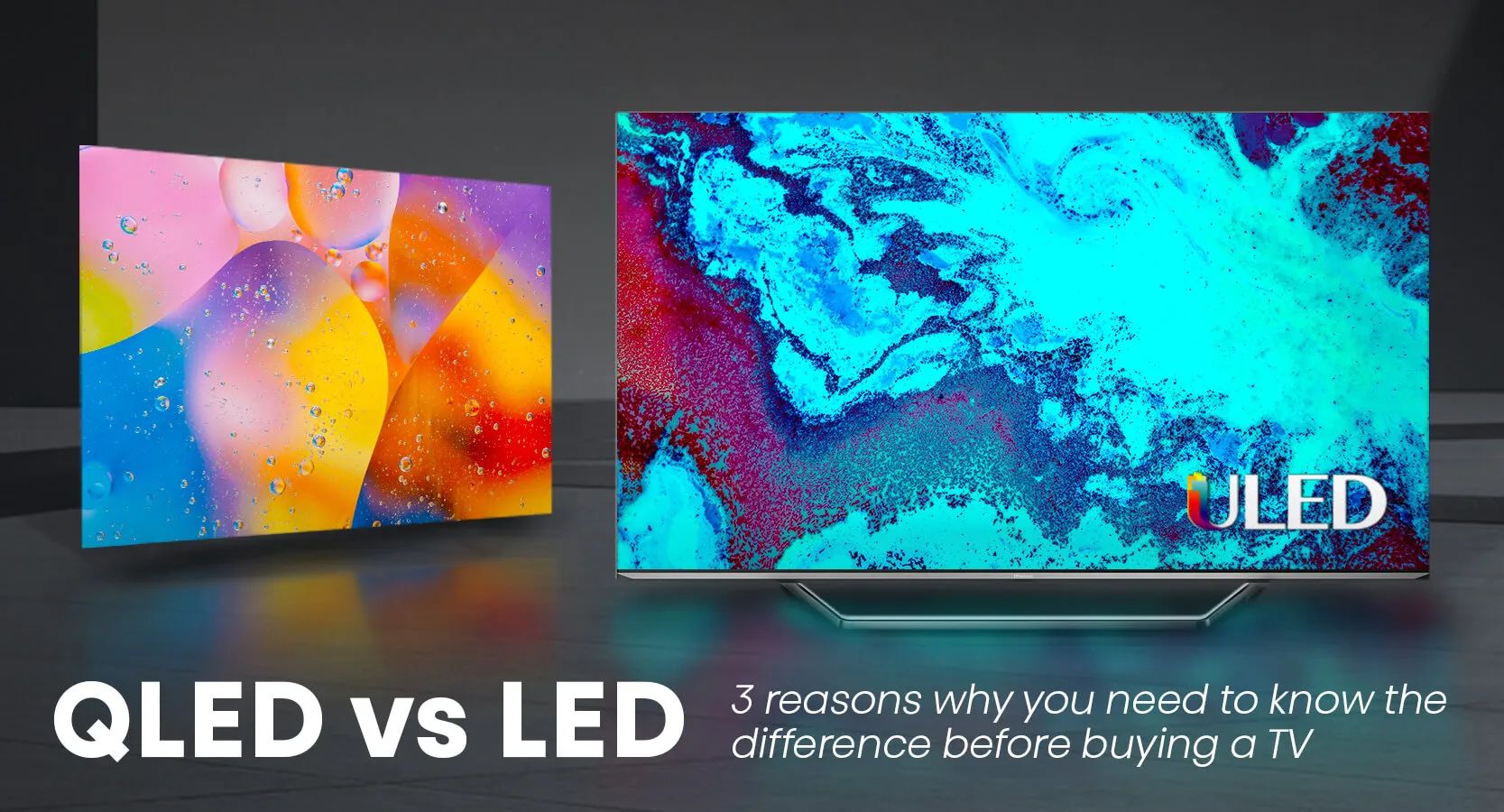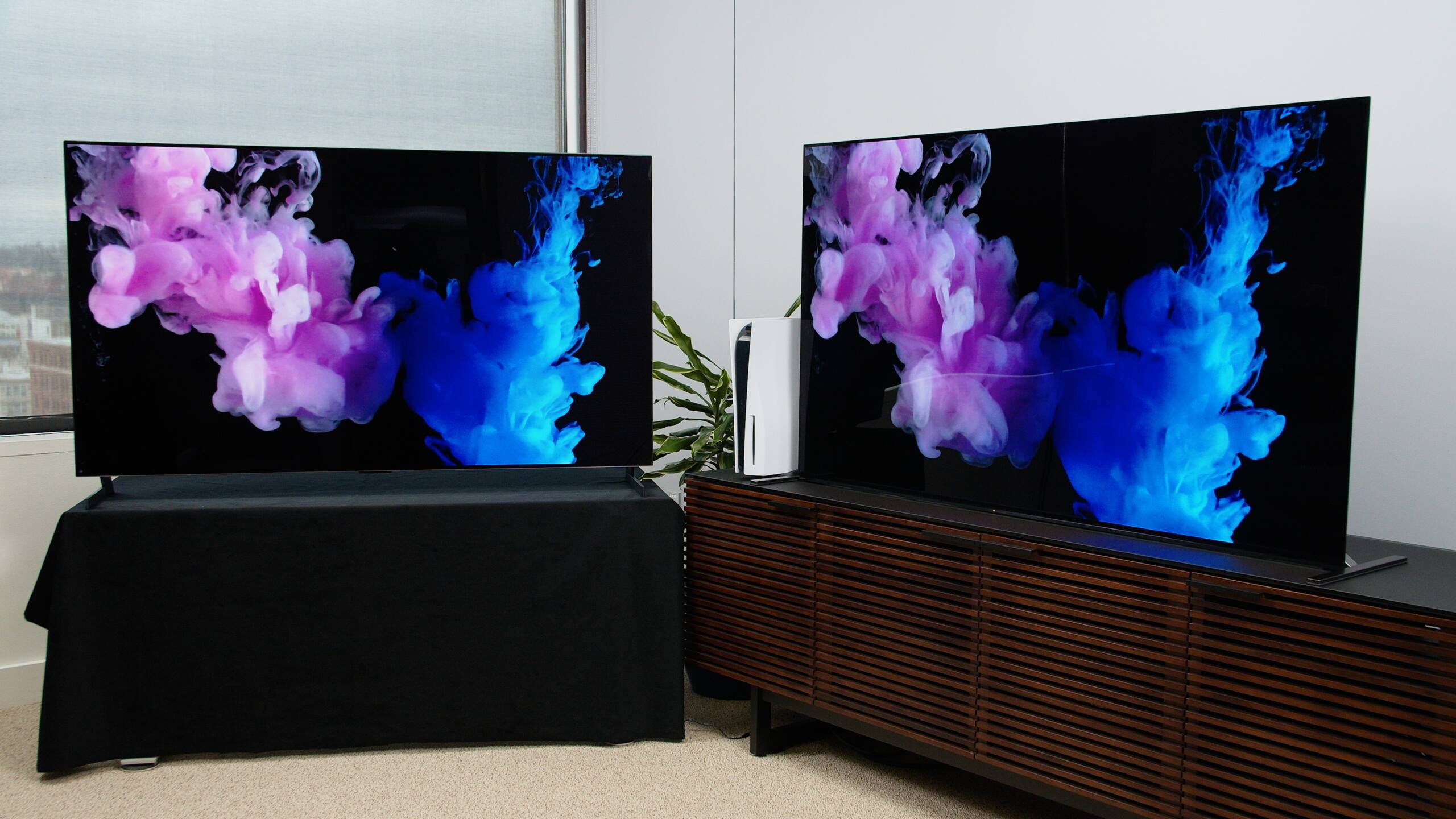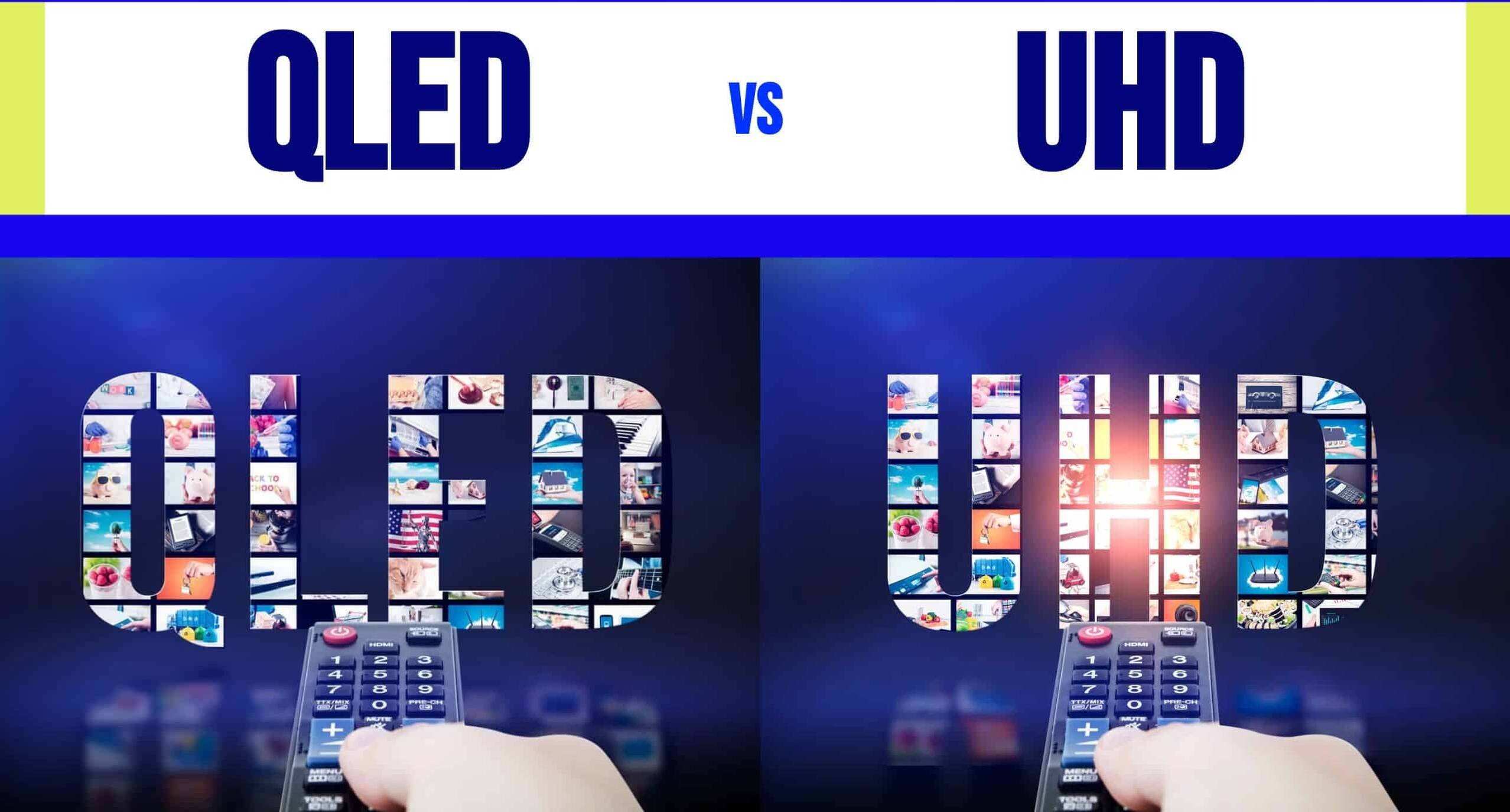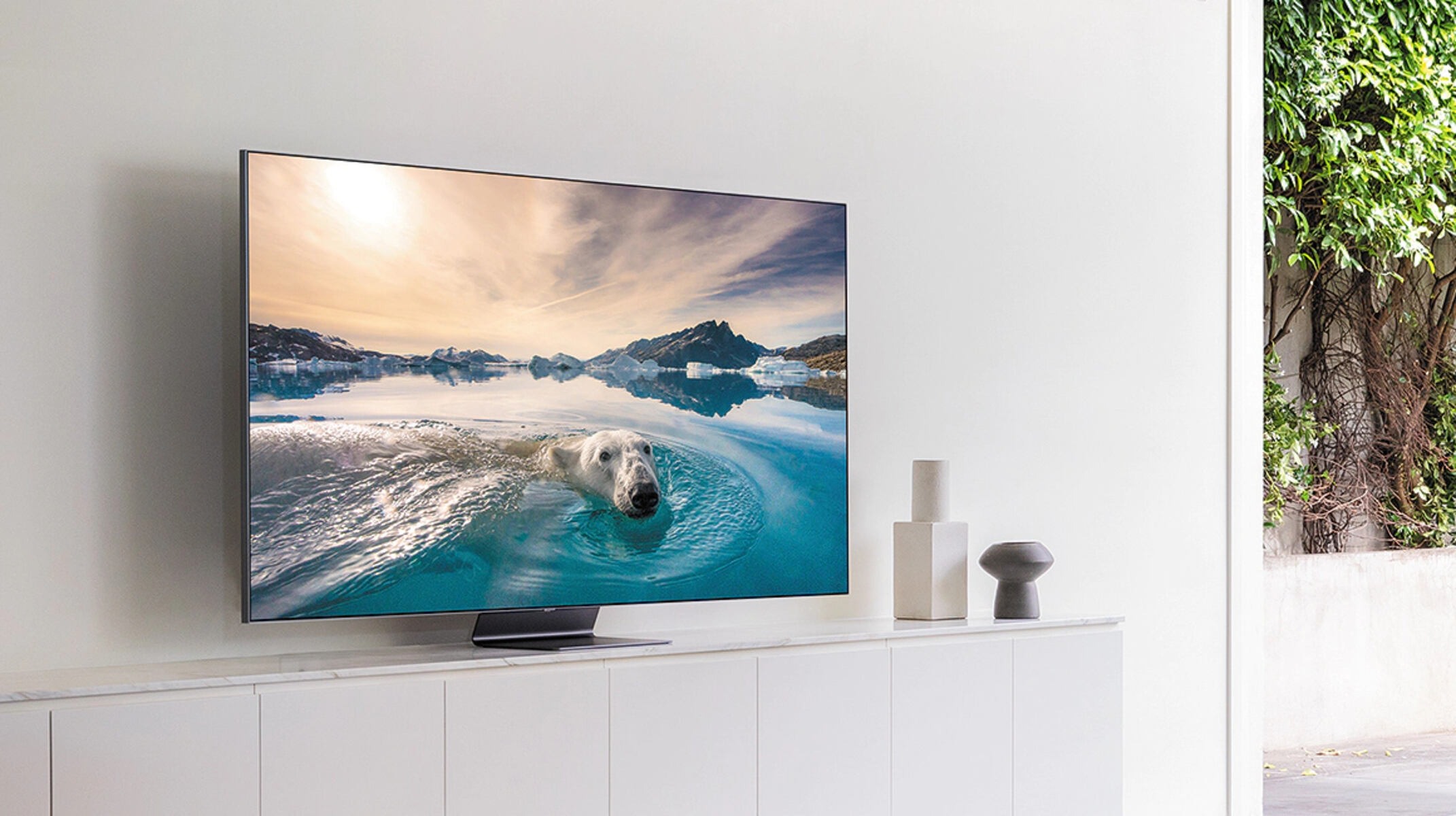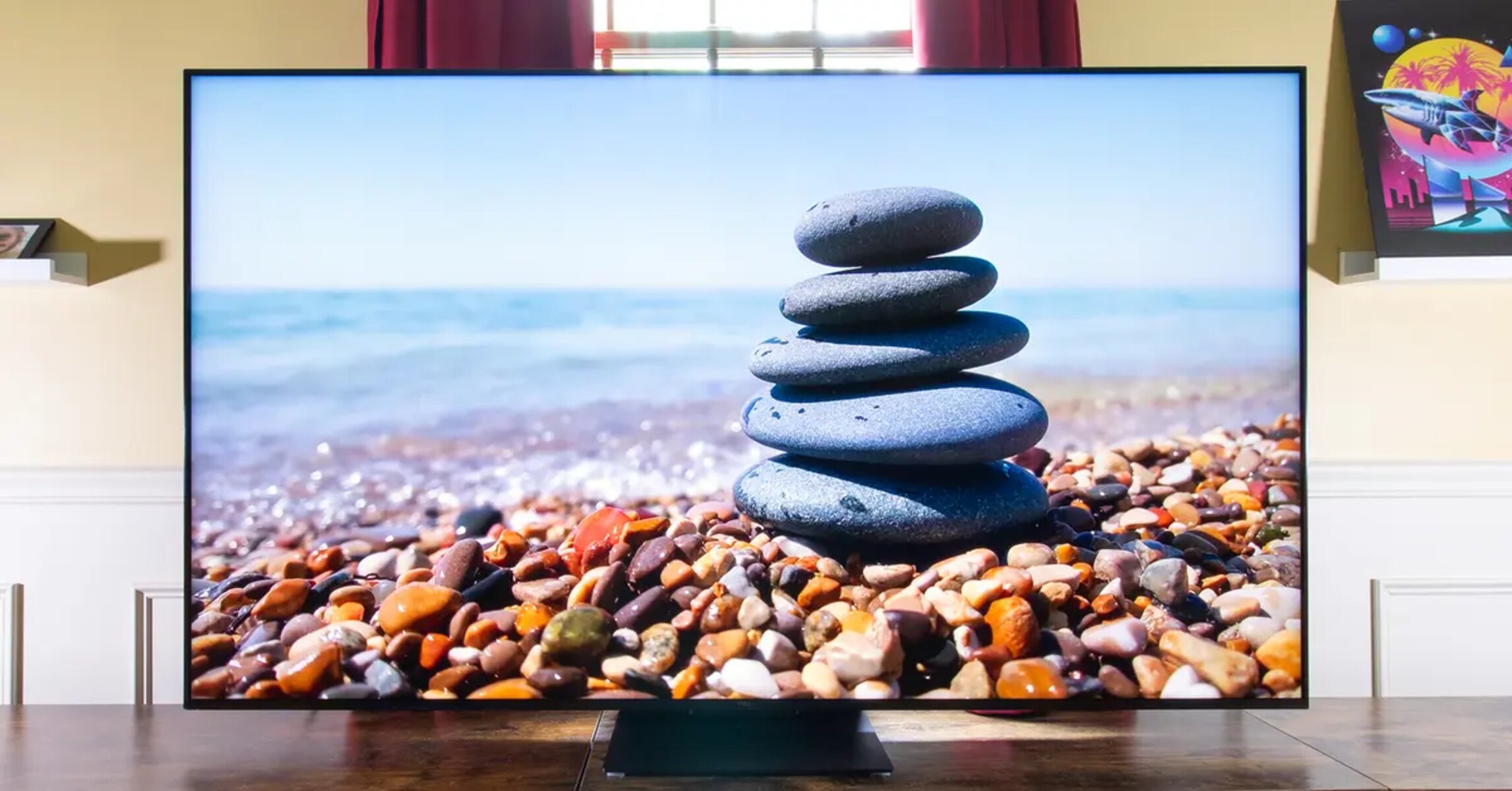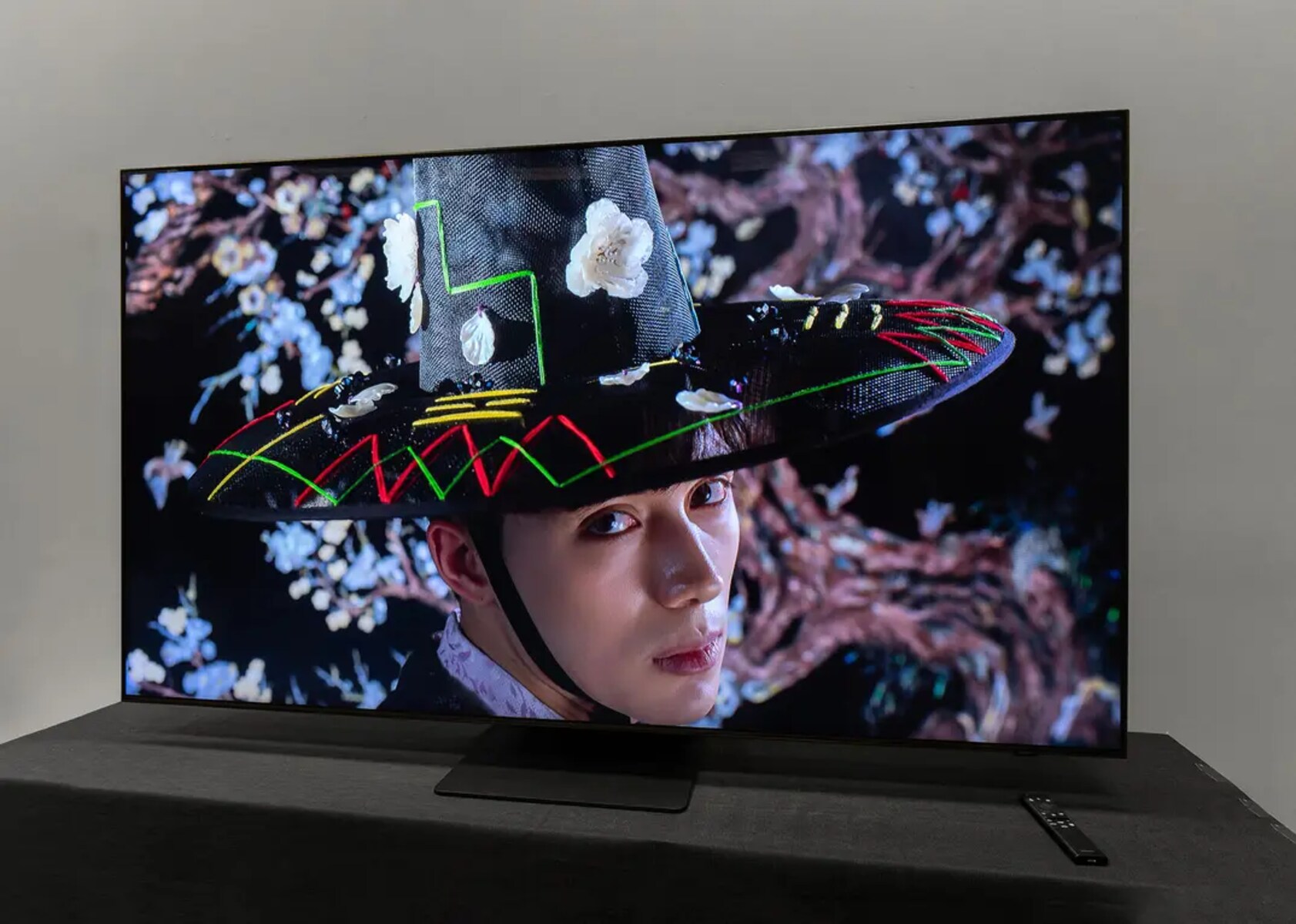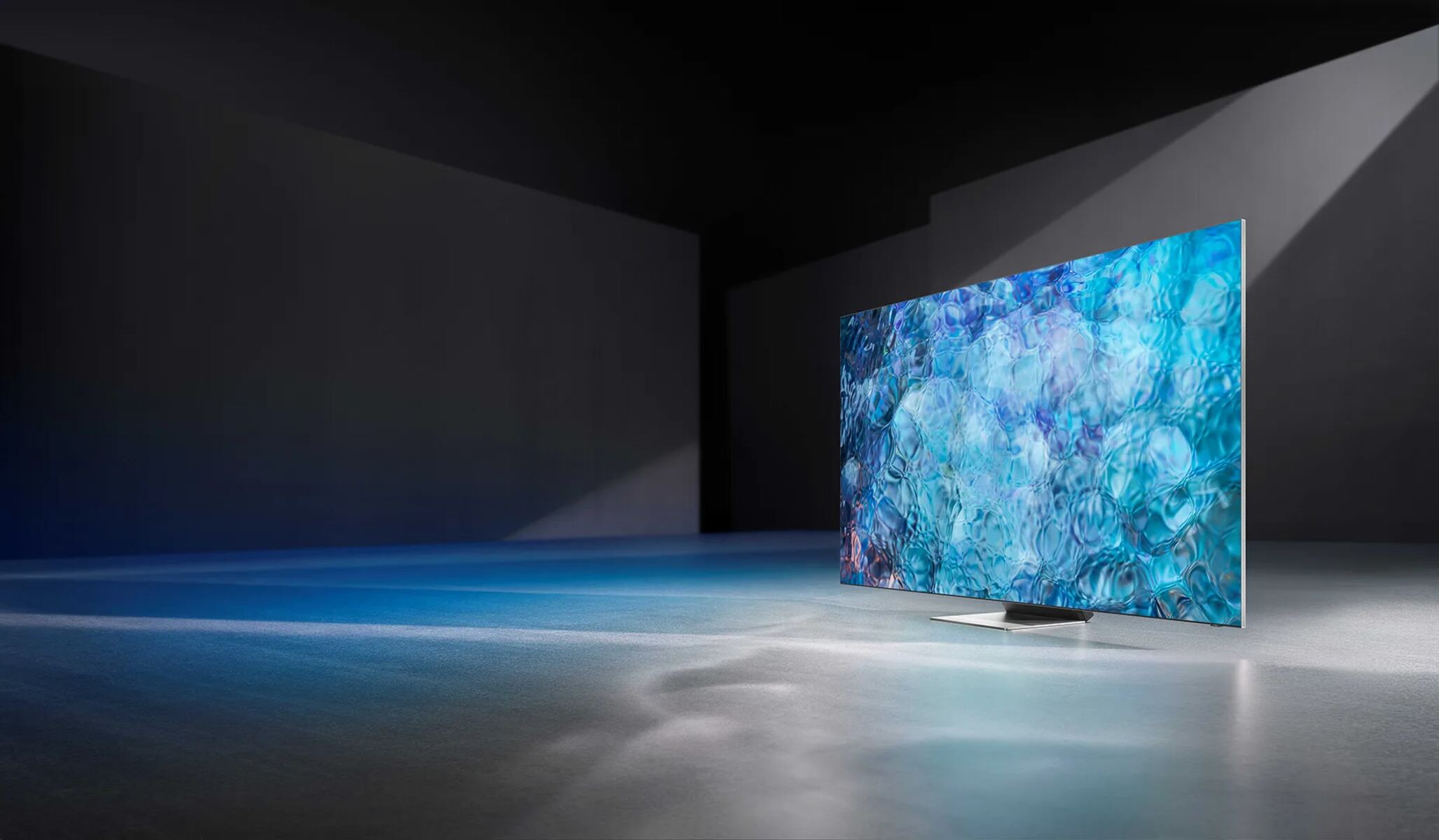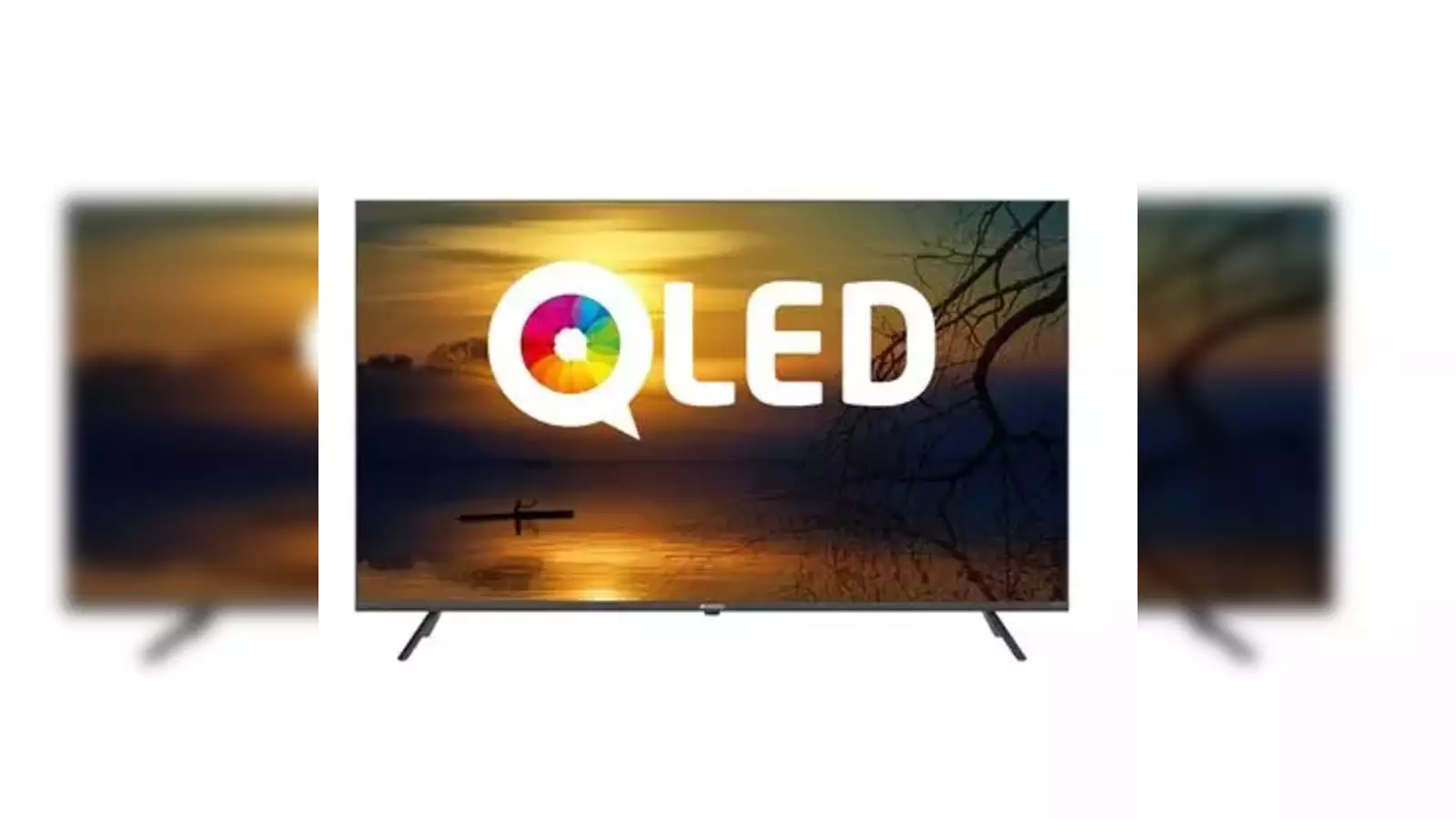Introduction
When it comes to choosing a television, there are a plethora of options available in the market. From the stylish OLED panels to the more traditional LED screens, consumers have a wide range of choices. However, in recent years, QLED TVs have gained popularity and are often compared to LED TVs due to their similar-sounding names. But what exactly is the difference between the two?
QLED stands for Quantum Dot Light Emitting Diode, while LED stands for Light Emitting Diode. Both technologies use light-emitting diodes to illuminate the screen, but the way they produce and display the light differs. Understanding the distinctions between QLED and LED TVs can help you make an informed decision when purchasing or upgrading your entertainment system.
In this article, we will explore the differences between QLED and LED TVs in terms of picture quality, viewing angle, color performance, contrast ratio, energy efficiency, and price. By the end, you will have a clearer understanding of which technology best suits your needs and preferences.
Definition of QLED TV
QLED TV, or Quantum Dot Light Emitting Diode TV, is an advanced display technology that combines quantum dot technology with LED backlighting. Quantum dots are tiny semiconductor crystals that emit different colors of light based on their size. In QLED TVs, these quantum dots are used to create a wider and more accurate color gamut, resulting in vivid, lifelike colors.
The key feature of QLED TVs is their use of Quantum Dot Enhancement Film (QDEF). This film is placed in front of the LCD panel and acts as a filter that enhances the color performance by improving the purity and accuracy of the backlight color. The quantum dots in the film are excited by the LED backlight, producing precise and vibrant colors.
QLED TVs also incorporate local dimming technology, which allows for better contrast and black levels. This technology selectively dims or brightens specific areas of the screen to enhance the depth and richness of dark scenes.
Another advantage of QLED TVs is their high peak brightness levels. The LED backlight in QLED TVs can produce intense levels of brightness, making them ideal for well-lit rooms or environments with ambient light.
It is important to note that despite the name, QLED TVs do not use organic materials like OLED TVs. While OLED technology enables individual pixels to emit light, QLED TVs still rely on LED backlighting. However, QLED TVs offer significant improvements in color reproduction and brightness compared to traditional LED TVs.
In summary, QLED TVs use quantum dot technology and LED backlighting to provide enhanced color performance, local dimming, high peak brightness levels, and an overall superior viewing experience compared to standard LED TVs.
Definition of LED TV
LED TV, or Light Emitting Diode TV, is a display technology that utilizes light-emitting diodes to illuminate the screen. This technology has largely replaced the older CCFL (Cold Cathode Fluorescent Lamp) backlights used in traditional LCD TVs.
LED TVs offer several advantages over their predecessors. The main advantage is their superior energy efficiency. LED backlighting consumes less power compared to CCFL backlighting, resulting in lower energy consumption and reduced electricity bills.
LED TVs come in two main types: edge-lit and full-array. In edge-lit LED TVs, the LEDs are positioned along the edges of the screen and the light is diffused across the entire display. On the other hand, full-array LED TVs have a grid of LEDs spread across the entire back panel, allowing for more precise and localized control of lighting.
LED TVs also provide excellent brightness levels, making them well-suited for rooms with high levels of ambient light. The LED backlights can be adjusted to achieve high levels of peak brightness, enhancing the overall image quality and allowing for better visibility in well-lit environments.
Another advantage of LED TVs is their slim design. LED technology allows for thinner and lighter televisions compared to older LCD models, without compromising on picture quality.
LED TVs also offer a wide range of screen sizes and resolution options to choose from, making them versatile for various viewing needs and preferences. Whether you want a compact TV for a bedroom or a large screen for a home theater setup, LED TVs offer a wide range of options.
In summary, LED TVs utilize light-emitting diodes for backlighting, providing advantages such as energy efficiency, brightness, slim design, and a wide range of screen sizes and resolutions. While they may not offer the advanced color performance of QLED or OLED TVs, LED TVs are still a reliable and popular choice for many consumers.
Picture Quality
When it comes to picture quality, both QLED and LED TVs offer stunning visuals. However, there are some differences between the two technologies that affect the overall viewing experience.
QLED TVs utilize quantum dot technology, which allows for a wider color gamut and more accurate color reproduction. The quantum dots in QLED TVs can produce rich and vibrant colors, resulting in beautiful and lifelike imagery. The combination of quantum dot technology and LED backlighting in QLED TVs creates a visual experience that is both immersive and captivating.
On the other hand, LED TVs offer excellent picture quality as well, but they may not match the color accuracy and vibrancy of QLED TVs. LED TVs rely on the backlighting to illuminate the screen, and while they can provide bright and vivid images, they may not achieve the same level of color saturation and accuracy as QLED TVs.
One important factor to consider when comparing picture quality is the contrast ratio. QLED TVs generally have better contrast ratios, thanks to their ability to locally dim the backlight. This means that dark scenes appear deeper and more realistic, with enhanced details in shadows. LED TVs, while still capable of producing good contrast, may not have the same level of depth and richness in dark scenes.
It is worth noting that both QLED and LED TVs have made significant advancements in recent years, with new models offering improved picture quality. Manufacturers continue to refine their technologies to deliver the best possible visuals to consumers.
In summary, QLED TVs excel in color reproduction and offer a wider color gamut, resulting in stunning and vibrant visuals. LED TVs, while still providing excellent picture quality, may not match the same level of color accuracy and contrast as QLED TVs. However, advancements in both technologies mean that consumers can expect impressive visuals from both options.
Viewing Angle
The viewing angle refers to the maximum angle at which a TV screen can be viewed without experiencing a degradation in picture quality. It is an important factor to consider, especially if you frequently watch television with a group of people or from different seating positions.
QLED TVs generally have a wider viewing angle compared to LED TVs. This means that the picture quality and colors remain consistent even when viewed from off-center positions. The advanced panel technology in QLED TVs allows for a wider dispersion of light, reducing the impact of color shift and loss of brightness when viewed from different angles.
LED TVs, on the other hand, may exhibit a decrease in picture quality when viewed from off-center positions. This can result in a reduction in contrast, color saturation, and overall brightness. While some newer LED models have made improvements in viewing angles, they may still not match the wide viewing angles of QLED TVs.
It is important to consider the layout of your viewing space and seating arrangement when deciding between QLED and LED TVs. If you have a large living room or frequently host gatherings, a wider viewing angle of a QLED TV may be beneficial to ensure everyone has a good viewing experience regardless of their seating position.
It is worth noting that the difference in viewing angle may not be noticeable in smaller rooms or for those who usually watch television alone or from a centered seating position. In such cases, an LED TV may still provide a satisfactory viewing experience.
In summary, QLED TVs generally offer a wider viewing angle, ensuring consistent picture quality and colors even when viewed from off-center positions. LED TVs may have more limited viewing angles, but the impact may vary depending on the specific model and viewing environment. Consider your seating arrangement and the size of the room to determine the importance of viewing angle in your decision-making process.
Color Performance
Color performance is a crucial aspect of TV technology, as it directly impacts the visual experience. When comparing QLED and LED TVs, there are notable differences in their color performance.
QLED TVs are known for their exceptional color performance. Thanks to quantum dot technology, QLED TVs can produce a wider color gamut and more accurate colors compared to LED TVs. The use of quantum dots enables QLED TVs to display a broader range of colors, resulting in more lifelike and vibrant images. This enhanced color performance is especially noticeable in scenes with rich and bold colors, making QLED TVs great for watching movies, sports, and other visually dynamic content.
LED TVs, while still capable of displaying good color performance, may not match the same level of accuracy and vibrancy as QLED TVs. LED TVs rely on the backlighting technology to create colors, and while they can provide bright and vivid images, they may not achieve the same level of color saturation and accuracy as QLED TVs.
In recent years, LED TVs have incorporated technologies like Wide Color Gamut (WCG), which aims to improve color performance. WCG allows for a wider range of colors to be displayed, bringing LED TVs closer to the color capabilities of QLED TVs. However, QLED TVs still have the advantage in terms of color accuracy and richness.
It is worth noting that individual preferences for color performance may vary. Some viewers may prefer the more vibrant and accurate colors produced by QLED TVs, while others may find the color display of LED TVs to be satisfactory for their needs.
In summary, QLED TVs outshine LED TVs in terms of color performance due to their quantum dot technology. The wider color gamut and accurate colors delivered by QLED TVs make them the preferred choice for those who prioritize rich and vibrant visuals. LED TVs, while still capable of displaying good color performance, may not offer the same level of color accuracy and vibrancy as QLED TVs. Consider your preferences and usage scenarios to determine which technology best suits your needs.
Contrast Ratio
Contrast ratio is a crucial factor when it comes to the overall visual experience of a television. It refers to the difference between the darkest and brightest parts of an image, and a higher contrast ratio generally translates to richer and more detailed picture quality.
QLED TVs generally offer better contrast ratios compared to LED TVs. This is mainly due to the local dimming technology employed in QLED TVs. Local dimming allows specific areas of the screen to be dimmed or brightened independently, resulting in deeper blacks and brighter whites. This dynamic adjustment enhances the overall contrast, making the images appear more realistic with enhanced details in both dark and bright scenes.
LED TVs, while still capable of producing good contrast ratios, may not match the same level of depth and richness as QLED TVs. LED TVs typically have a global dimming feature, where the backlight brightness is adjusted uniformly across the entire screen. This can lead to a slight reduction in contrast and details in dark scenes.
It is important to note that the number of dimming zones plays a role in the contrast ratio. QLED TVs with more dimming zones offer better control over individual sections of the screen, resulting in higher contrast ratios. Higher-end QLED models typically have a higher number of dimming zones compared to lower-end models.
While contrast ratio is an important consideration, it is also worth noting that other factors, such as local lighting conditions and the content being displayed, can impact the perception of contrast. A brighter room with ambient light may affect the perceived contrast ratio, regardless of the TV technology being used.
In summary, QLED TVs generally offer better contrast ratios compared to LED TVs, thanks to their local dimming technology. The ability to individually control the brightness of specific sections of the screen enhances the depth and richness of both dark and bright scenes. While LED TVs can still produce good contrast ratios, they may not match the same level of depth and detail as QLED TVs. Consider your viewing environment and preferences to determine the importance of contrast ratio in your TV selection.
Energy Efficiency
Energy efficiency is an important consideration for many consumers, not only to reduce electricity bills but also to minimize the environmental impact. When comparing QLED and LED TVs, LED TVs generally offer better energy efficiency.
LED TVs consume less power compared to QLED TVs. This is primarily due to the difference in backlighting technology. QLED TVs use LED backlighting, which requires more power to produce bright and vibrant images. On the other hand, LED TVs use more energy-efficient LED lights for backlighting.
LED TVs are designed to be energy-efficient by utilizing advancements in LED technology. The LED backlighting in LED TVs can be adjusted to achieve optimal levels of brightness, resulting in reduced overall energy consumption. This is especially beneficial in situations where the TV is used for long periods or left on continuously.
QLED TVs, while not as energy-efficient as LED TVs, have made improvements in recent years. Manufacturers have implemented various energy-saving features to reduce power consumption without compromising on picture quality. Some QLED models offer energy-saving modes or sensors that adjust the backlight dynamically based on ambient lighting conditions to optimize energy efficiency.
It is worth noting that the energy efficiency of a TV can vary depending on the specific model and settings. Features like motion smoothing or high brightness levels can increase power consumption. However, LED TVs generally remain more energy-efficient overall.
When considering energy efficiency, it is essential to look for TVs with ENERGY STAR certification. The ENERGY STAR qualification ensures that the TV meets strict energy efficiency standards set by the Environmental Protection Agency (EPA), resulting in reduced energy consumption.
In summary, LED TVs are generally more energy-efficient compared to QLED TVs. LED backlighting technology allows for lower power consumption without compromising on picture quality. However, QLED TVs have also made strides in improving energy efficiency, with the integration of energy-saving features. Consider your energy conservation goals and habits to determine the importance of energy efficiency in your TV choice.
Price
Price is a significant factor for many consumers when considering a new television. When comparing QLED and LED TVs, LED TVs generally offer more affordable options.
LED TVs, being a more established technology, are available in a wide range of price points, from budget-friendly options to high-end models. This variety allows consumers to choose a TV that fits within their budget. LED TVs are often more cost-effective, making them a popular choice for those looking for a good-quality television without breaking the bank.
QLED TVs, on the other hand, are typically priced higher than LED TVs. The advanced technology and superior picture quality of QLED TVs contribute to the higher price. The incorporation of quantum dot technology and other enhancements increases the production costs, resulting in a premium price tag.
However, it is worth considering that the gap in price between QLED and LED TVs has narrowed in recent years, as both technologies continue to evolve. Manufacturers are introducing more affordable QLED models to cater to a wider range of consumers. It is also important to note that the price difference may vary depending on the specific brand, model, and screen size.
Considering your budget and desired features, LED TVs are generally a more budget-friendly option. However, if you value the superior picture quality and advanced technology of QLED TVs, it may be worth investing in a higher-priced model.
When making a purchasing decision based on price, it is important to also consider the long-term value. Factors such as energy efficiency, durability, and warranty should be taken into account alongside the initial price. Lower-priced TVs may have a shorter lifespan or higher energy consumption, which can impact the overall value in the long run.
In summary, LED TVs offer a wider range of price options and are generally more affordable compared to QLED TVs. However, the price difference between the two technologies has become less significant in recent years. Consider your budget, desired features, and long-term value when making a decision based on price.
Conclusion
In conclusion, both QLED and LED TVs have their own strengths and considerations to keep in mind when making a buying decision.
QLED TVs excel in areas such as color performance, contrast ratios, and wider viewing angles. The use of quantum dot technology allows for more accurate and vibrant colors, creating a more immersive viewing experience. QLED TVs also offer superior contrast ratios and wider viewing angles, ensuring consistent picture quality from various seating positions.
LED TVs, on the other hand, offer a more budget-friendly option without compromising on picture quality. LED TVs provide excellent energy efficiency, making them a cost-effective choice for those looking to reduce electricity bills. They also come in a wide range of sizes and resolutions, making them versatile for different viewing needs.
When deciding between QLED and LED TVs, it is important to consider factors such as picture quality preferences, viewing environment, budget, and long-term value. QLED TVs are ideal for those who prioritize exceptional color performance, contrast, and wider viewing angles, and are willing to invest in a higher-priced model. LED TVs are a practical and affordable choice for those seeking a reliable TV with good picture quality and energy efficiency.
Ultimately, the choice between QLED and LED TVs depends on personal preferences and specific requirements. Both technologies continue to evolve and improve, offering exceptional visual experiences for consumers. Whatever decision you make, consider your viewing preferences, budget, and desired features to find the TV that best suits your needs and provides an enjoyable entertainment experience for years to come.







